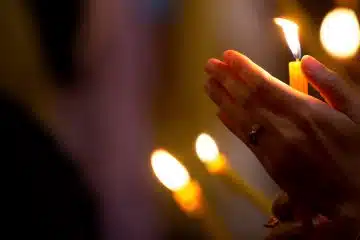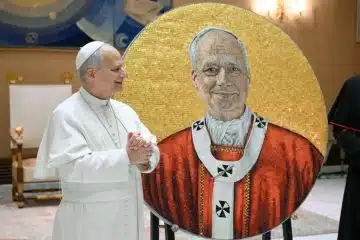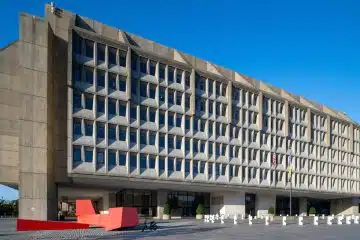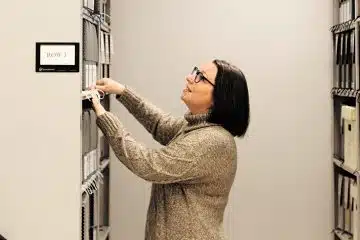OHSAA won’t separate private, public schools: Referendum vote in progress

From the May 2013 print edition of The Catholic Telegraph
By John Stegeman
The Catholic Telegraph
Private schools in Ohio, including the 90 or so Catholic high schools, will not be segregated into a separate athletic division — at least not this year.
Many Catholic Ohioans interested in high school athletics had their eyes on a referendum set for this May to see if private and public schools would be split into separate divisions. The OHSAA announced in late March, however, that it and the original petitioner for the separation reached a compromise and dropped the measure, replacing it with one that keeps both private and public schools in the same boat — with some provisions.
The original proposal would have placed a referendum item on the OHSAA May ballot (voting period May 1-15) that called for all OHSAA tournaments to be conducted separately for public schools and non-public (private) schools. The new competitive balance proposal could place an addition onto a school’s initial enrollment count on a sport-by-sport basis (in team sports only) that is based on the number of students on a team’s roster who are from outside that school’s district or designated attendance zone.
The proposal tries to correct a perceived advantage private schools have over some of their public counterparts. Whereas a particular public school district is limited to students from a certain area, a private school can pull from a much further region, allowing it to have a larger pool of potential athletes.
For some, the new proposal is at the least an improvement over splitting public and private schools.
“Being a Catholic educator my entire career, I think this is as fair as it is going to get,” St. Xavier High School Athletics Director John Sullivan said. “The reason I think that is because of the alternative. This is the lesser of two evils, I guess. They’re eventually going to throw us out.”
St. Xavier is one of the largest Catholic schools in the state, and as such the new proposal will not affect the Bombers Division I status. Had the ballot measure to split public and private schools remained on the table, however, St. Xavier and all Catholic schools would have seen things change.
The risk of a possible split for Division I schools is different. Finding quality competition, and schools willing to face them, already requires St. Xavier, and other powerhouses in football like Elder and Moeller, to travel to Louisville, Indianapolis and other far-off destinations. If they were to lose the opportunity to face large public schools in the postseason, it could create a financial burden.
“If there is a split, a lot of the Division II and below private schools think its better to go and do our own thing because they can compete with each other. They don’t want to compete with us either,” Sullivan said.
One of the Division II Catholic schools (Division III in football), Alter High School in Dayton, is among those the new proposal could hurt the most. Using the OHSAA enrollment figures from 2010, Alter is Division II in most sports. OHSAA figures in 2010 reported Alter had 255 boys in grades 9, 10 and 11. If pulling students from outside the assigned public school district were to bump the Knights up, they’d be competing with schools like St. Xavier (1,164 boys in 2010), which has more than four times as many boys, in the postseason team sports.
“I think everybody is very disappointed,” Alter Athletics Director Christina Hart said. “I think we were hoping there would be a little bit more fair for all the schools and truly address the imbalance, and this doesn’t truly address it.”
While private Catholic schools do pull from multiple school districts using the public school maps, most Catholic high schools have something resembling a district already in their traditional “feeder” parishes. While there’s no rule saying students from a particular Catholic grade school must attend a specific high school, many traditional bonds exist. Female students from St. William parish and school in Price Hill, for example, are more likely to attend Seton High School. In a sense, this gives Catholic schools a loose school district. Under the new system, a Catholic school could be penalized for drawing students from the same parishes it always has. The boundaries will instead be based off the public school district where the private school is located.
“If you go back to what our feeder schools traditionally were, they’re in three different school districts in Dayton, for just one school,” Hart said. “I think that needs to be taken into consideration.”
Catholic Central Director of Athletics Dan Shay is not happy with the new competitive balance proposal, but many see it as a better alternative to splitting the public and private schools into separate divisions. Catholic Central is in the smallest division for every sport in which it competes.
“It seems to me they’re still grasping at straws to separate us from the public schools,” Shay said. “I think they’re trying anything and everything just to look at ways to, I want to say, level the playing field, but its not typically bad. We’re a small school and we still compete.”
Hart added that part of the reason private schools, such as the Catholic schools in the Archdiocese of Cincinnati, are so successful in athletics is the type of student that attends.
“Public schools have involvement, and they have kids that are goal-oriented and driven as well,” Hart added. “We’re very fortunate to get kids that are maybe even up a notch, with parents who are even up a notch… Most of the time that’s a very positive thing.”
Many news reports on the original referendum indicated public support among schools was trending toward a separation. Sullivan believes the OHSAA does a good job running their state tournaments now and doesn’t think much change is needed. If the new proposal passes, however, Catholic and other private high schools in Ohio will at least be able to stop worrying about the issue.
“I think the state of Ohio does a tremendous job running their state tournaments, and getting schools involved and getting kids excited about their communities,” Sullivan said. “I don’t think there needs to be a change, I think there needs to be adjustments… I like the way it is now. I just hope we can come to a resolution soon and put this thing behind us and move on.”













